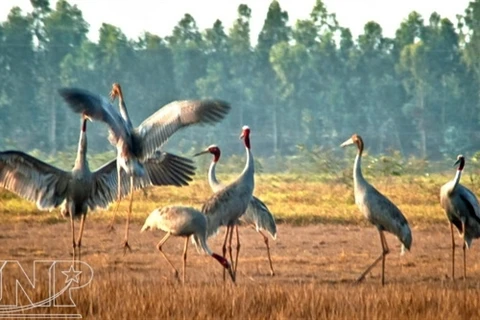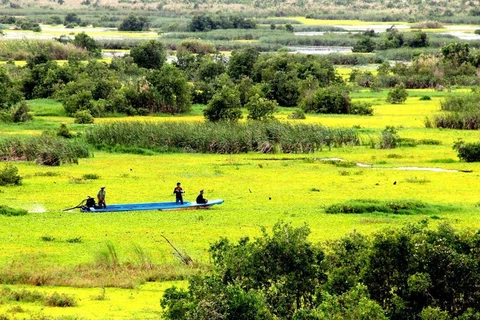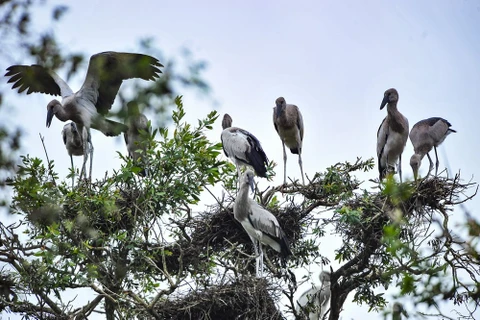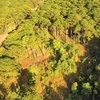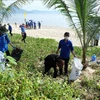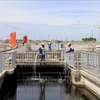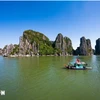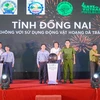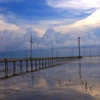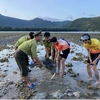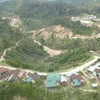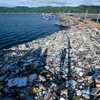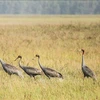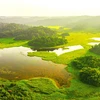Hanoi (VNA) - Wetlands play a very important role in the country’s socio- economic development, environment, culture and history, particularly biodiversity conservation, because they are "home” to a lot of rare species which are at high risk of extinction.
Therefore, the Ramsar Convention is an international document on the conservation and use of wetland areas in a proper and suitable manner, with the aim of preventing the increasing encroachment against wetlands as well as the loss of land, recognising the ecological functions of the wetland platform and their recreational, scientific, cultural and economic values.
The Ramsar Convention Secretariat has recognised 5 Ramsar sites in Vietnam, namely Xuan Thuy, Bau Sau, Ba, Ca Mau Tram Chim, wetland areas of international importance.
According to the Department of Biodiversity Conservation under the Vietnam Environment Administration, the recognition of Ramsar sites in Vietnam not only confirms the value of the country’s wetlands in the world, but also demonstrates the effectiveness of conservation and sustainable development of wetlands in the country. However, Ramsar sites are being threatened due to the pressure of the current development. Thus appropriate measures should be taken to maintain the ecology, preserve and sustainable develop the resources of our biodiversity.
Xuan Thuy Ramsar in Giao Thuy district, the Red River Delta province of Nam Dinh is an example. It was officially recognisied on Sept. 29, 1988. With a total area of 12,000 ha, this is the first Ramsar in Vietnam and the 409th in the world. The Ramsar is an important estuarine with remained muddy ecosystem and coastal mangrove of the Red River basin, including mainland connecting to the sea dike and marsh edge.
Xuan Thuy Ramsar site is a very important area for water birds and migratory birds and the habitat of endangered species such as spoonbills, pelicans and normann greenshanks. This is the core zone of the Red River Delta Biosphere Reserve thanks to the abundant, diversified biological resources of 120 species of vascular plants, over 3,000 hectares of mangroves; 107 species of fish, 500 species of aquatic life; 220 species of birds; more than 10 species of mammals and many reptiles, insects and amphibians.
This ecosystem has high bio-productivity and sensitivity. The total estimated output of fish and fishery industry amounts to 10,300 tonnes per year. Rice production output is 40,000 tonnes apart from aquatic catching and duck breeding. Specifically, the mangrove ecosystem plays an important part in sustaining fisheries, providing wood resources and wooden fuel. It is also plays a vital role in protecting the coastline from the impacts of typhoons and climate change.
The site has taken measures to make use of manage and preserve wetlands as well as harmonize the interests of community and protecting the Ramsar site. Locals are allowed to exploit fisheries resources in the Ramsar site manually without affecting the habitat of aquatic organisms. The community and the Management Board have jointly managed mangrove resources.
However, the exploitation of resources has not been managed strictly as regulated. The development of infrastructure construction in the Ramsar site, such as building concrete roads, is putting enormous pressure on the sustainability of the ecological environment, as well as the habitat of many rare species here.
To deal with the potential threats and the pressures of socio-economic development to Xuan Thuy Ramsar site, it is necessary to carry out a regulation for sustainable management of Ramsar sites in wetlands, based on the principles of ecology and the unique characteristics of the wetlands.
The regulation must clearly reflect the responsibility of the management board, management offices at provincial and central levels on training skills on protecting the wetlands, investing in biodiversity supervision and checking.
Besides, it is necessary to accelerate the implementation of conservation and rational use of wetlands in the Ramsar site. For Cham Chim area, it is advised to conduct the final review and evaluation, draw lesson learnt and maintain the management of water and the fire. On that basis, it is urgent to build the overall planning of Ramsar sites of Vietnam in the context of more serious climate change. This will act as an important foundation for land use planning and conservation of biodiversity in the wetlands.
Another important solution is the cooperation and implementation of "co-management" with the provincial People’s Committees having Ramsar sites; supporting five existing Ramsar sites in ecological conservation techniques, improving staff’s capacity, creating a harmonious mechanism between preserving and developing sustainably; between the Management Board and the community and sharing benefits and responsibilities to create model Ramsar sites in wetland management.-VNA
VNA

